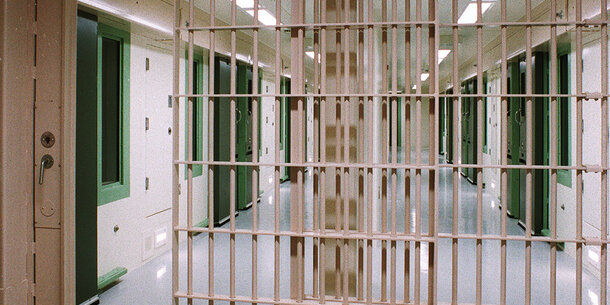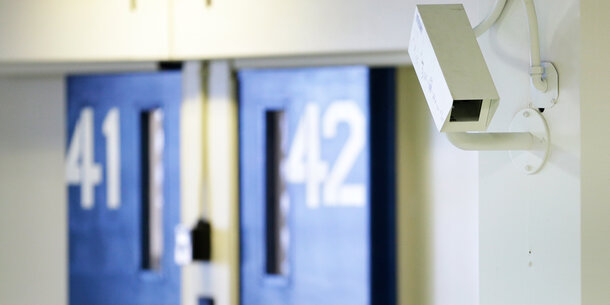This piece was originally published by Vital City.
Decades of relentless violence in New York City’s jails — particularly on Rikers Island — have prompted the top federal prosecutor in Manhattan and a federal judge to question whether the city is “capable of safe and proper management of the jails.” If the judge, Laura Taylor Swain, ultimately concludes the city lacks the capabilities or will to turn the tide, she could appoint an outside authority known as a receiver to manage city jails temporarily in the hopes of reforming them.
How would it work? It depends. Once the judge makes the decision that a receiver is warranted, both sides in the case — in this instance, the city and the plaintiffs — would come forward to propose how they believe it ought to function. For example, in some jurisdictions (the Chicago juvenile detention facility), the commissioner remained in place, working alongside a receiver. In other jurisdictions, like D.C. and California, a receiver has only overseen a certain portion of correctional operations, like healthcare delivery. In still other instances, the receiver will manage the entire facility or system, like Alabama; Wayne County, Michigan; and Fulton County, Georgia. In New York’s case, the judge would ultimately determine the structure after careful review of the institutional problems to be remediated and the parties’ recommendations.
The court would decide who the receiver is as well, after weighing suggestions from the parties. In some cases, a receiver has been a long-time correctional professional, in others, a lawyer, and even once, a governor. The receiver’s skills must match the issues to be addressed. In selecting the receiver in Hinds County, Mississippi, for instance, the judge rejected the local government’s choice because the person’s “background was in prison operations and not in jail operations.” In New York City, bringing reform to Rikers will require someone with broad and deep experience in the management of complicated organizations and the skill to negotiate with unions, elected officials and others. After the court appoints a receiver, it would work with them to develop a plan to remedy stubborn constitutional violations.
A tool of last resort, prison and jail receiverships are quite rare. Since 1979, when Alabama became the nation’s first state or locality to have a court strip it of control over its own prisons or jails, federal and state judges have approved transfers of power away from local jail and state prison authorities only 12 times in the history of the United States; nine of those 12 cases have focused singularly on jail operations.
After Brown v. Board of Education, courts repurposed receivership to force recalcitrant school systems to comply with desegregation orders. Eventually, judges began deploying receivership to compel other sorts of public institutions, like prisons and jails, to fulfill their legal obligations to vulnerable populations.
Right now, the U.S. has three active prison and jail receiverships. Receivers are governing some parts of California’s prisons as well as the Miami-Dade County jail, which, in a rare move, asked the court to be placed into receivership. (Usually courts claim they’re left no other choice but to impose receivership onto a prison or jail.) The Hinds County, Mississippi jail — the third active receivership case — is on hold pending federal appellate review.
Originally used to secure, preserve and protect land, receivership is an ancient judicial device with roots stretching back to the reign of Queen Elizabeth I. American courts generally didn’t use receivership until the 19th century, when industrialists sought to seize control of insolvent railroads. Then later, in the wake of massive southern resistance to Brown v. Board of Education, American courts repurposed receivership to force recalcitrant school systems to comply with desegregation court orders. Eventually, judges began deploying receivership to compel other sorts of public institutions, like prisons and jails, to fulfill their legal obligations to vulnerable populations.
Nearly all the debate over a federal court takeover of the New York City jails has centered on whether officials want to or can get their arms around the jails’ continuous, massive challenges. But there’s another question of enormous importance that has received far less attention: Will a receivership succeed?
The answer is hard to predict. Plagued for decades, the jails suffer from a barrage of complex, entrenched and interlocking issues. Still, we can shed some light on the possibilities and limitations of a receivership for Rikers if we look at how prison and jail receivers have fared in their attempts to ameliorate the management challenges — which are among Rikers Island’s greatest structural problems — as well as the sustainability of a receiver’s work after the government regains control and judicial oversight peters out.
Receivers can influence staffing for the better, largely because judges typically grant them expansive powers.
Staffing
To say that Rikers has a staffing problem is an understatement — but the problem is not about how many corrections officers are on duty; staff-to-detainee ratios here are higher than any other jail system in America. Rather, what ails New York City’s jails is how staffers are deployed and managed, and the union rules that dictate those matters.
Staffing is often a primary focus of receivership; at least seven receiverships for prisons and jails were designed to address staffing shortcomings. A major reason Hinds County’s jail was placed into receivership is because of its “particularly egregious” deficiencies in staffing, specifically supervision, which led to a “stunning array of assaults, as well as deaths.”
Receivers can influence staffing for the better, largely because judges typically grant them expansive powers. For example, judges that seized control of jails in Hinds County; Fulton County, Georgia; Wayne County, Michigan; and Washington, D.C.; as well as prisons in Alabama and California, issued orders conferring on receivers sweeping authority over workforces: They could hire, fire, suspend and supervise various staff members.
Some receivership orders relating to staffing go further.
The Alabama receivership implemented an effective management scheme that had been lacking “for the better part of two decades.” It removed numerous unqualified doctors and hired a good deal of qualified new medical staff. Prior to the receivership, there were just 27 medical employees for Alabama’s prison system, but during the receivership period, the state’s prison medical staff grew to 137 employees. The Alabama receivership period also set new performance standards for employees and required trainings that led to “a marked improvement in cleanliness” and “enormously better” medical services and sanitation.
But correction officers unions — especially in New York City — can be immensely powerful, and the staffing policies for which they may advocate can be antithetical to the basic operations of a prison or jail. For example, since at least the 1970s, the collective bargaining agreements between New York City and the Correction Officers’ Benevolent Association (COBA) have enabled jail staff to take sick leave without accountability. If not accompanied by effective management and accountability processes, this can be deleterious. At the height of the COVID-19 pandemic, as many as 2,000 officers per day were calling out sick. The staffing shortages produced by the outages during COVID-19 resulted in a breakdown of basic jail operations.
Receivers can address provisions within union contracts that impede the receiver’s work in remedying constitutional violations. Generally speaking, receivers are powerful creatures and their actions will usually be upheld against challenge if their actions are deemed necessary to eliminate constitutional violations behind bars. And so, whenever staffing implicates a prison or jail’s constitutional violations, judges at the outset will grant receivers wide-ranging managerial powers over staff. This expansive authority may enable receivers to make choices that affect labor union contracts.
While there’s little prison or jail receivership litigation concerning union contractual disputes, during the Cook County, Illinois, receivership, the court determined that the receiver could make numerous staffing-related decisions that affected correction union members’ rights and benefits. That was, in part, because the court’s order setting out the powers of the Cook County receiver understood the important role that staffing deficiencies played in the constitutional violations and thus gave the receiver a broad mandate to restructure the institution and specific powers to oversee staffing to that end. Specifically, the receiver had the power “to establish personnel policies; to create, abolish or transfer positions; and to hire, terminate, promote, transfer, and evaluate the management and staff of the” facility.
After a jurisdiction regains control of its facility, it often fails to fully commit itself to maintaining many of the gains of receivership, staffing among them.
Intense as disagreement between unions and receivers may be, however, that disagreement, as the Cook County receivership litigation shows, needn’t be a win-big-or-go-home contest. The parties may lock horns over discrete portions of a collective bargaining agreement while leaving undisturbed the rest of the agreement creating no controversy. And sometimes unions might not challenge a receiver at all; to the contrary, unions might well treat a receiver as a welcome development, viewing the temporary change in management as necessary to improve conditions. For example, the California Correctional Peace Officers Association, the corrections officers’ labor union in California, supported the appointment of a receiver for the state prisons because “it became clear [that California officials] lacked the ability in institutional capacity [and the willingness]. . . to effectively address the overcrowding” in the state prisons and officers’ jobs were challenging because of the deplorable conditions of confinement.
The nub of the problems on Rikers at this moment is neither too many detainees nor too few staffers. But other receiverships — at least seven, in fact — have targeted, and alleviated, chronic overcrowding. To the extent that overcrowding conceivably becomes an issue in the context of Rikers, a receiver would therefore have ample tools and authority to tackle it.
Continuity
The other essential question about receivership is: What comes after it?
After a jurisdiction gets the keys back to its facility, it can fail to commit itself fully to maintaining many of the gains of receivership, staffing among them. Although a receiver improved the D.C. jail’s medical care from 1995 to 2000, because of “exorbitant” high costs, the government failed to keep up the reforms. Today, for that reason and others, the D.C. jail’s medical care is allegedly once again unconstitutional.
Moreover, despite the successes of Alabama’s prison receivership, the state facilities today are overwhelmed by severe understaffing, overcrowding, violence, drug use and inadequate medical and mental healthcare. Last year, 270 people died in Alabama’s prisons — the state’s highest death toll on record. Conditions in Alabama’s prisons in 2020 were so horrendous that the U.S. Department of Justice under President Donald Trump sued the state for violence, sexual abuse, unsafe and unsanitary facilities and excessive force. Receiverships thus may be viewed as providing only temporary, rather than permanent, relief without buy-in from the government.
Conclusion
There is a humanitarian crisis in New York City’s jails, and it has been decades in the making. If local officials cannot figure out how to house people humanely, perhaps the appointment of a federal court receiver may be necessary to enforce the Constitution and improve the conditions. Receivers can and do make a difference. Who the receiver is, how the judge structures and oversees the receivership, how the receivership interacts with the Rikers closure plan, city leaders’ commitment to reform and countless other factors will determine its success. But like the courts from which they derive power, well-crafted receiverships can offer a path to solution but they are no panacea.



